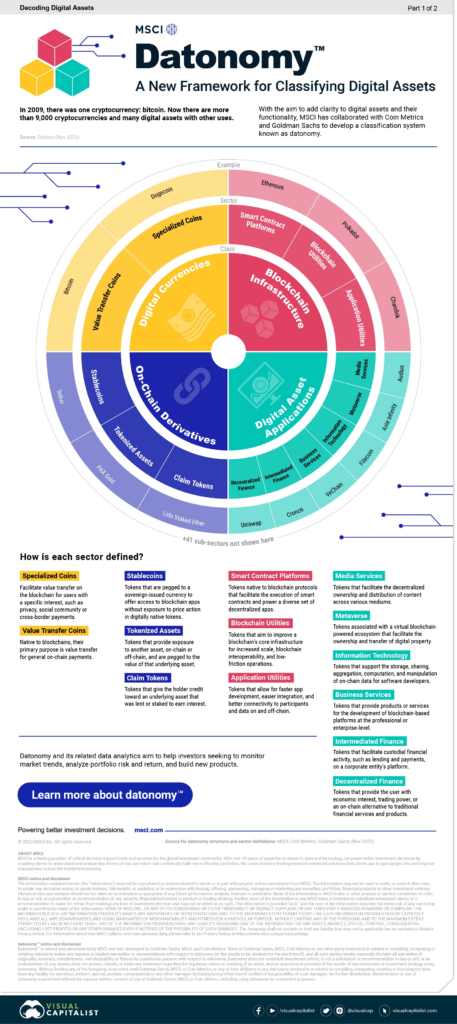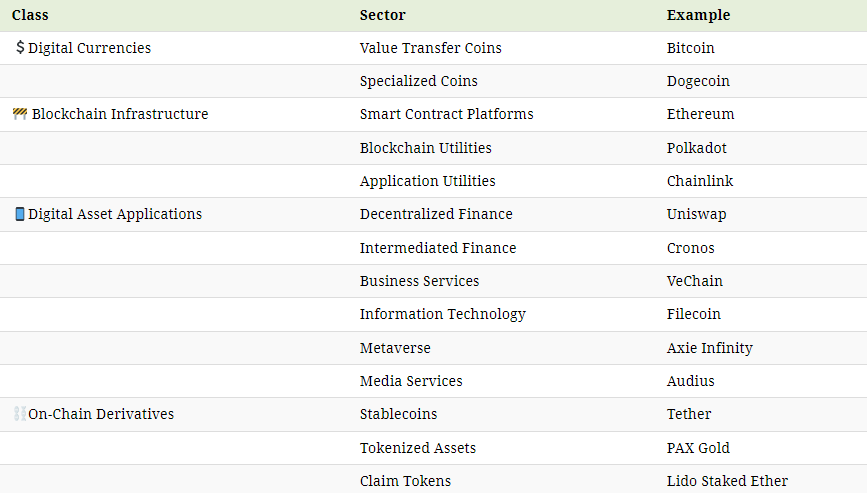WRITTEN by Jenna Ross
GRAPHICS & DESIGN by Miranda Smith

Classifying Digital Assets With a New Framework: Datonomy
In 2009, there was one cryptocurrency: bitcoin. Now there are more than 9,000 cryptocurrencies and many digital assets with other uses.
As the ecosystem becomes more complex, investors need more structure and clarity to make sense of how assets relate. In this graphic from MSCI, we introduce a new classification framework known as Datonomy. It is the first in a two-part series on decoding digital assets.
The Main Uses of Digital Assets
MSCI collaborated with Coin Metrics and Goldman Sachs to develop the framework, which classifies digital assets according to what they are primarily used for. It is hierarchical with three levels of classifications: classes, sectors, and subsectors.
We show the first two levels in the table below, along with examples of each sector.

Let’s take a closer look at one sector within each class.
Specialized Coins facilitate value transfer on the blockchain for users with a specific interest, such as privacy, social community, or cross-border payments. Meme coins like Dogecoin fall under this sector, as do cryptocurrencies like Monero where every user is anonymous by default.
Smart Contract Platforms are tokens native to blockchain protocols that facilitate the execution of smart contracts and power a diverse set of decentralized applications. Following an “if this, then that” structure, smart contracts are essentially digital agreements that automatically execute when the terms are met. Ethereum is an example of a smart contract platform.
Decentralized Finance tokens provide the user with economic interest, trading power, or an on-chain alternative to traditional financial services and products. The sector includes things like exchanges (such as Uniswap), peer-to-peer loans, prediction markets for betting, and asset management.
Stablecoin tokens are pegged to a sovereign-issued currency to offer access to blockchain apps without exposure to price action in digitally native tokens. An example of a stablecoin is Tether, which has a 1-to-1 peg with a matching fiat currency such as the U.S. dollar.
A Structural Lens for Investors
As the digital assets universe continues to expand and evolve, investors need a consistent way to analyze the market.
Datonomy and its related data analytics aim to help investors seeking to monitor market trends, analyze portfolio risk and return, and build new products. Get insight on digital assets with MSCI’s data service, datonomy.



